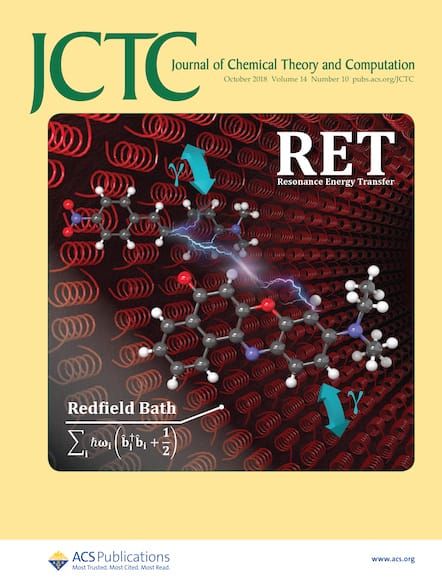精确双分量相对论极化密度嵌入。
IF 5.5
1区 化学
Q2 CHEMISTRY, PHYSICAL
引用次数: 0
摘要
我们在基于eXact 2-Component (X2C)相对论哈密顿量的相对论框架中实现了基于片段的极化密度嵌入(PDE)模型,从而将PDE方法引入到相对论框架中。PDE模型为电子泄漏问题提供了一个鲁棒的解决方案,并且我们表明这个新实现的模型为具有显著相对论效应的溶剂化系统提供了一种精确的建模方法。为了证明模型的性能,我们用X2C哈密顿量对水溶剂化半胱氨酸(质子化和去质子化)的K-和L2 - 3边谱进行了比较计算。特别是当溶剂中存在Na+等反离子时,在旧的极化包埋模型中,电子泄漏通过光谱中的伪峰清晰地表现出来。然而,当采用PDE模型时,这些伪峰就消失了。本文章由计算机程序翻译,如有差异,请以英文原文为准。
Exact Two-Component Relativistic Polarizable Density Embedding.
We have implemented the fragment-based polarizable density embedding (PDE) model within a relativistic framework building on the eXact 2-Component (X2C) relativistic Hamiltonian, thereby taking the PDE method to a relativistic framework. The PDE model provides a robust solution to the electron-leakage problem, and we show that this newly implemented model offers an accurate way to model solvated systems possessing significant relativistic effects. To demonstrate the model's performance, we perform comparative calculations of the K- and L2,3-edge spectra of water-solvated cysteine (both protonated and deprotonated) with the X2C Hamiltonian. Particularly, with counterions such as Na+ in the solvent, electron leakage clearly shows in the older polarizable embedding model through spurious peaks in the spectra. However, when the PDE model is employed, these spurious peaks disappear.
求助全文
通过发布文献求助,成功后即可免费获取论文全文。
去求助
来源期刊

Journal of Chemical Theory and Computation
化学-物理:原子、分子和化学物理
CiteScore
9.90
自引率
16.40%
发文量
568
审稿时长
1 months
期刊介绍:
The Journal of Chemical Theory and Computation invites new and original contributions with the understanding that, if accepted, they will not be published elsewhere. Papers reporting new theories, methodology, and/or important applications in quantum electronic structure, molecular dynamics, and statistical mechanics are appropriate for submission to this Journal. Specific topics include advances in or applications of ab initio quantum mechanics, density functional theory, design and properties of new materials, surface science, Monte Carlo simulations, solvation models, QM/MM calculations, biomolecular structure prediction, and molecular dynamics in the broadest sense including gas-phase dynamics, ab initio dynamics, biomolecular dynamics, and protein folding. The Journal does not consider papers that are straightforward applications of known methods including DFT and molecular dynamics. The Journal favors submissions that include advances in theory or methodology with applications to compelling problems.
 求助内容:
求助内容: 应助结果提醒方式:
应助结果提醒方式:


